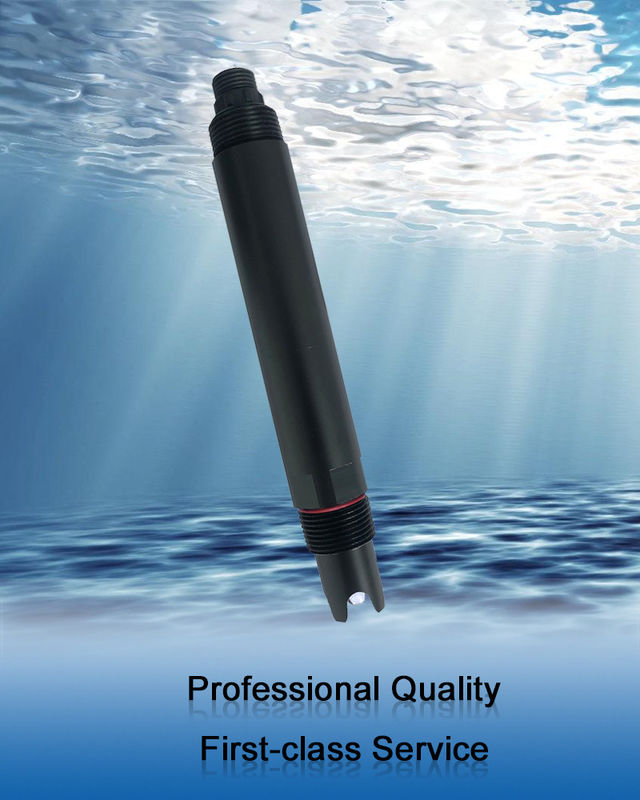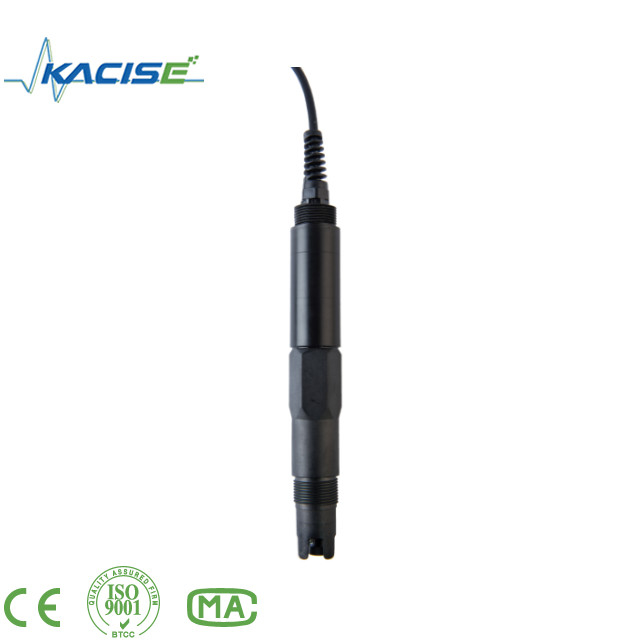KPH601 Online PH Sensor Signal Output: RS-485 (Modbus/RTU Protocol)
1.Industrial pH measurement
A retractable housing has great advantages when installed literally in a pipe-line. The pH electrode may be checked, cleaned, calibrated and
replaced without interrupting the process. When installed in a pipe-line, no bypass valves are necessary. The possibility of withdrawing the
electrode during the process helps to ensure a correct pH measurement. Retractable pH housings meet the requirements for an automatic
pH measuring system. Probes without a retractable function enable the maintenance of an electrode only in combination with an interruption of
the process, emptying of the vessel, etc. in pressurized systems.After having clarified the installation possibilities, the process determines the choice of suitable electrode and housing. Both components of the pH electrode assembly should suit the process requirements.
Electrodes with a liquid electrolyte must be operated with an overpressure, preventing the measuring solution from entering into the
reference electrolyte. The overpressure also ensures a constant cleaning of the junction. Housings for liquid electrolyte electrodes
therefore posses a pressure chamber and a pressure indicator. Using this type of pH electrode assembly requires
control of the overpressure and the periodic inspection of the level of the reference electrolyte. Because of their ability to be refilled, liquid
filled electrodes have a long life expectancy if maintained correctly.Also, in the case of difficult measurements a special electrolyte may be used.
Electrodes with gel or polymer electrolytes require very little maintenance. Checking the overpressure and the electrolyte level is not necessary. Polymer electrolyte electrodes are pressure resistant and do not need a classical junction due to their special construction; therefore, they are less sensitive to contamination. Electrodes with a gel electrolyte may be supplied with an overpressure. Since their life expectancy is generally good, a gel or polymer electrode is often the most economical alternative due to their low maintenance costs. In addition, the probe can be kept small and simple, since no pressure chamber is needed. The probe in the probe housing has to have the same corrosion resistance as the reactor. In addition to stainless steel, alloyed materials (e.g. Hastelloy) and plastics (e.g. PVDF) are used.
2.Signal processing and environmental influences
The combination electrode provides a potential which is specific for the pH value. This signal has a high resistance. In order to represent it as a pH value, a special transmitter is needed. The potential of the pH electrode is also influenced by the temperature. Therefore, the pH transmitter offers the possibility of manual or automatic temperature compensation.
3.Technical Specifications
| Model |
KPH601 |
| Measuring Range |
0~14pH |
| Resolution |
0.01pH |
| Accuracy |
±0.1pH |
| Working Temperature |
0~65℃ |
| Working Pressure |
<0.2MPa |
| Temperature Compensation |
Auto temperature compensation (NTC) |
| Power Supply |
12~24VDC ±10% |
| Signal Output |
RS-485(Modbus/RTU) |
| Wetted Material |
POM |
| Mounting Method |
Immersion mounting, 3/4 NPT thread |
| Cable Length |
5 meters, other lengths can be customized |
| Calibration |
Two-point calibration |
| Power Consumption |
<0.3W@12V |
| Protection Grade |
IP68 |
4.Dimensional Drawing

Note:The sensor connector is M16-5 core waterproof joint male head.
5.Installation

Note: The sensor should not be installed upside down or horizontally when installed, at least at an angle of 15 degrees or more.
Contact Us
Website www.kacise.com
Phone +86-17719566736
Email sales@kacise.com
Location Tangyan South Road, High-tech Zone, Xi'an City, Shaanxi Province, China


 Your message must be between 20-3,000 characters!
Your message must be between 20-3,000 characters! Please check your E-mail!
Please check your E-mail!  Your message must be between 20-3,000 characters!
Your message must be between 20-3,000 characters! Please check your E-mail!
Please check your E-mail! 


